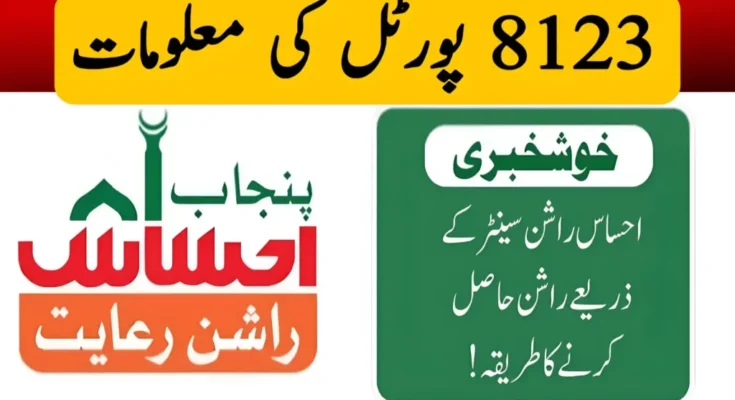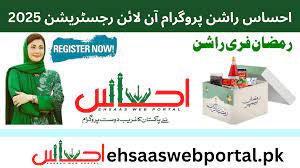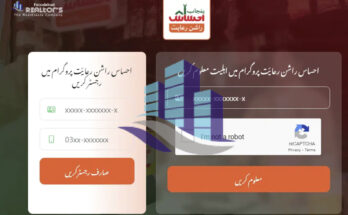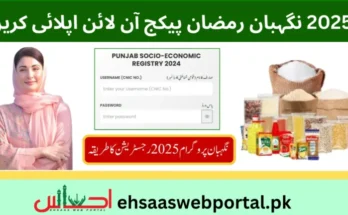Introduction
Ehsaas Emergency Cash: In times of crisis, when economic hardship threatens the livelihoods of millions, governments must act swiftly to protect their most vulnerable citizens. Pakistan’s Ehsaas Emergency Cash Program, launched in March 2020, stands as a monumental effort to provide rapid financial relief to those hit hardest by crises like the COVID-19 pandemic and ongoing economic challenges. As part of the broader Ehsaas initiative, this program has become a lifeline for millions of low-income families, offering immediate cash assistance to help them afford basic necessities such as food, healthcare, and education. This article explores the origins, implementation, impact, and ongoing relevance of the Ehsaas Emergency Cash Program, highlighting its role in transforming Pakistan’s social safety net.
Origins and Purpose of the Ehsaas Emergency Cash Program
The Ehsaas Emergency Cash Program was introduced as a direct response to the economic fallout caused by the COVID-19 pandemic. With lockdowns disrupting livelihoods, particularly for daily wage earners, laborers, and low-income households, the Government of Pakistan, under the leadership of then-Prime Minister Imran Khan, launched this initiative to mitigate the crisis’s impact. The program was designed to provide one-time financial assistance to millions of families, targeting those at risk of extreme poverty.
The initiative is a flagship component of the broader Ehsaas Program, a social safety net launched in 2019 to promote a welfare state in Pakistan. With the motto of “Compassion,” Ehsaas aims to uplift marginalized communities, reduce inequality, and support lagging districts through various poverty alleviation measures. The Emergency Cash Program became its most prominent pillar during the pandemic, disbursing Rs. 179 billion to over 15 million families, covering nearly half of Pakistan’s population when factoring in average family size.
The primary objective was straightforward: provide immediate subsistence support to families struggling to survive. Each eligible household received Rs. 12,000 initially, with later phases increasing the amount to Rs. 14,000 to account for rising inflation and economic pressures. The program’s scale and speed made it Pakistan’s largest social protection intervention to date, earning global recognition from institutions like the World Bank, Asian Development Bank, and United Nations.
How the Ehsaas Emergency Cash Program Works
The Ehsaas Emergency Cash Program leverages modern technology and digital infrastructure to ensure efficient, transparent, and accessible aid distribution. The process begins with eligibility verification, primarily through the National Socio-Economic Registry (NSER), a comprehensive database that profiles households based on their socio-economic conditions. This registry, updated through nationwide surveys, ensures that aid reaches those who need it most.
Registration Process
To register, individuals must send their Computerized National Identity Card (CNIC) number via SMS to the designated code 8171. The process is simple and accessible, even for those without internet access or smartphones. Applicants are required to enter their CNIC number without dashes to avoid errors. Once submitted, the Ehsaas team verifies eligibility through the National Database and Registration Authority (NADRA) and NSER data, ensuring that only deserving individuals—those with low income, no government employment, and no participation in other federal relief programs—receive aid.
Eligible applicants receive a confirmation SMS with instructions on where and how to collect their cash. Payments are disbursed through authorized channels, including Ehsaas retailer centers and biometrically enabled ATMs. They are also available at branchless banking points operated by banks like Habib Bank Limited (HBL) and Bank Alfalah. Biometric verification is used to ensure security and reduce fraud. Digital payment systems, such as mobile wallets like JazzCash and EasyPaisa, promote financial inclusion. This is especially beneficial for women and rural communities.
Eligibility Criteria
The program targets Pakistan’s most vulnerable groups, including:
- Pakistani citizens with a valid CNIC.
- Households with a monthly income below Rs. 30,000.
- Families affected by crises such as floods or pandemics.
- Non-government employees or beneficiaries of other federal relief schemes.
- Vulnerable groups like widows, orphans, the disabled, and the elderly.
The program’s focus on inclusivity ensures that marginalized communities, including women and residents of remote areas like Azad Jammu and Kashmir (AJK) and Gilgit-Baltistan, are prioritized.
Implementation and Digital Innovation
The success of the Ehsaas Emergency Cash Program lies in its innovative use of technology. By integrating mobile connectivity, national IDs, and commercial payment systems, the program created a demand-based social protection system that is both scalable and efficient. Key innovations include:
- Biometric Payment Systems: Payments are processed only after biometric verification, ensuring that funds reach the intended recipients.
- SMS-Based Registration: The 8171 SMS service allows individuals to apply without visiting physical offices, making the process accessible during lockdowns.
- Big Data Analytics: Wealth profiling and data analytics help identify eligible households, reducing errors and ensuring transparency.
- Online Portals: The Ehsaas web portal (https://8171.pass.nadra.gov.pk/) and BISP portal (https://bisp.gov.pk/) allow beneficiaries to check their eligibility and track payments.
These digital tools not only streamlined aid distribution but also set a global benchmark for crisis response. The World Bank ranked the program third globally in terms of population coverage and fourth in the number of people reached, praising its ability to deliver aid swiftly during a crisis.
Impact of the Ehsaas Emergency Cash Program
The Ehsaas Emergency Cash Program has had a profound impact on Pakistan’s socio-economic landscape. By disbursing Rs. 179 billion to over 15 million families in its first phase, it provided immediate relief to nearly half the country’s population. The program’s scale and efficiency helped avert an economic catastrophe during the COVID-19 lockdowns, enabling families to afford essentials like food, medicine, and shelter.
Key Achievements
- Massive Coverage: The program reached over 15 million households, representing approximately 72 million individuals, making it one of the largest social protection interventions globally.
- Financial Inclusion: By promoting digital payments and mobile wallets, the program empowered women and rural communities, many of whom gained access to financial services for the first time.
- Global Recognition: International organizations, including the World Bank, Asian Development Bank, and World Economic Forum, lauded the program for its innovative approach and extensive reach.
- Poverty Alleviation: The cash transfers helped families meet basic needs, reducing the risk of extreme poverty and supporting economic stability during a crisis.
Continued Relevance
While the program was initially launched to address the COVID-19 crisis, its framework has proven adaptable to other challenges, such as rising inflation and natural disasters like floods. In 2023, the program was merged back into the Benazir Income Support Program (BISP), ensuring continuity and streamlining social welfare initiatives. The current stipend of Rs. 14,000 per household reflects adjustments for inflation, and the program continues to support millions facing economic hardship due to IMF-driven policies and global economic pressures.
Challenges and Criticisms
Despite its successes, the Ehsaas Emergency Cash Program has faced challenges. Some common issues include:
- Registration Errors: Incorrect CNIC entries or network issues have occasionally delayed eligibility confirmation.
- Scams and Fraud: Fake SMS messages claiming to be from the 8171 portal have misled some applicants, prompting warnings to use only official channels.
- Access in Remote Areas: While digital tools have improved access, some rural beneficiaries still face difficulties reaching payment centers.
- Eligibility Disputes: Some deserving individuals, such as widows or the unemployed, have reported delays or rejections due to verification issues.
The government has addressed these challenges by setting up helplines, expanding payment centers (over 17,000 nationwide), and launching awareness campaigns to educate citizens about the registration process and scam prevention.
How to Apply for the Ehsaas Emergency Cash Program in 2025
For those seeking to benefit from the program in 2025, the registration process remains straightforward:
- Prepare Required Documents:
- Valid CNIC.
- Active mobile number.
- Household and income details.
- SMS Registration:
- Send your 13-digit CNIC number (without dashes) to 8171.
- Await a confirmation SMS indicating eligibility and collection details.
- Online Registration:
- Visit https://8171.pass.nadra.gov.pk/.
- Enter your CNIC number, phone number, and verification code.
- Submit your residential address and confirm details.
- Collect Funds:
- Visit authorized Ehsaas centers, HBL ATMs, or Bank Alfalah branches.
- Complete biometric verification to receive Rs. 14,000.
For issues or complaints, beneficiaries can use the 8171 portal or contact the Ehsaas helpline via WhatsApp within 24 hours.
The Future of Ehsaas Emergency Cash
The Ehsaas Emergency Cash Program has set a precedent for rapid, technology-driven social protection. Its integration into the BISP framework ensures its sustainability, while ongoing innovations, such as digital wallets and expanded surveys, promise to enhance its reach. The program’s focus on inclusivity, transparency, and efficiency makes it a model for other countries facing similar challenges.
As Pakistan navigates economic pressures and climate-related crises, the program’s adaptability will be crucial. Plans to increase cash support to Rs. 13,500 and introduce digital wallet access via platforms like JazzCash and EasyPaisa signal a commitment to modernizing social welfare. By continuing to prioritize the poor, the Ehsaas Emergency Cash Program will remain a cornerstone of Pakistan’s journey toward a compassionate welfare state.
Conclusion
The Ehsaas Emergency Cash Program is more than a financial aid initiative; it is a testament to Pakistan’s commitment to its most vulnerable citizens. By combining digital innovation with a focus on inclusivity, the program has delivered rapid relief to millions, earning global acclaim as a model for crisis response. As it evolves to meet new challenges, the Ehsaas Emergency Cash Program continues to offer hope and support to those who need it most, ensuring that no one is left behind in times of hardship.



